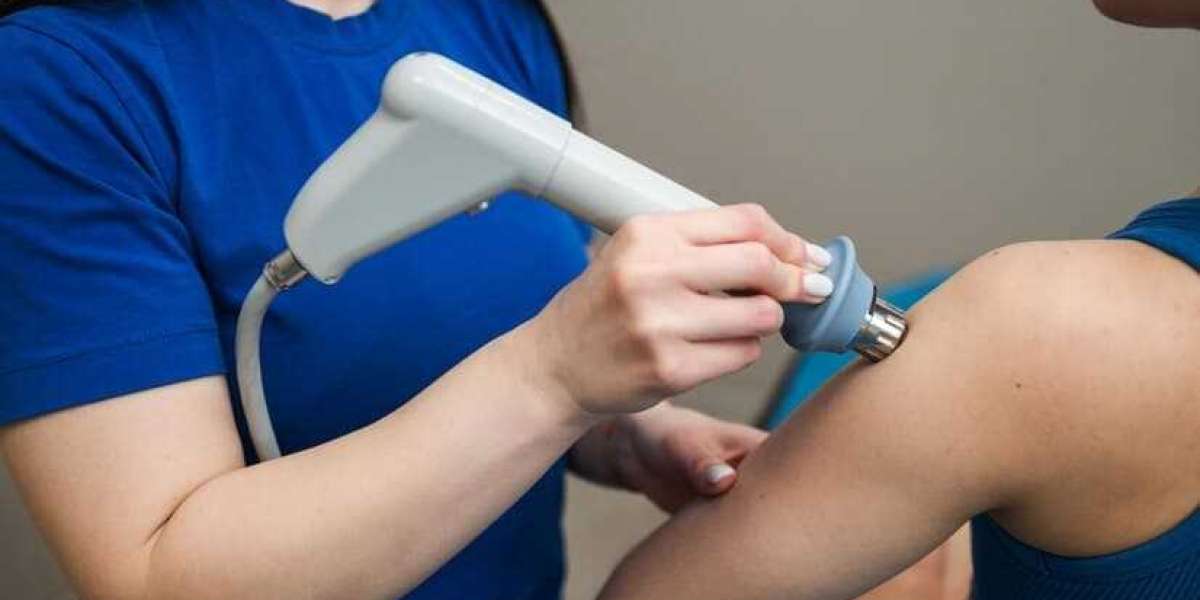Injury recovery can often be a long and frustrating process, especially for those who lead active lifestyles or depend on their physical abilities for work. Traditional treatments may help, but they do not always provide quick results. This is where innovative techniques such as Shockwave Therapy have become increasingly valuable. Known for its ability to accelerate healing, reduce pain, and restore mobility, this treatment is changing how patients recover from injuries.
What Is Shockwave Therapy?
Shockwave Therapy is a non-invasive treatment that uses acoustic waves to stimulate the body’s natural healing process. These sound waves penetrate deep into tissues, increasing blood flow, breaking down scar tissue, and activating cellular repair. Originally developed for breaking kidney stones, the technique has evolved into a powerful tool for musculoskeletal injuries.
Unlike medications or surgeries, Shockwave Therapy focuses on stimulating the body to repair itself. For many patients, this means faster recovery with fewer risks and side effects.
How Shockwave Therapy Works
Shockwave Therapy works on the principle of mechanical stimulation. When acoustic waves are delivered into the injured area, they create microtrauma at a cellular level. While this might sound concerning, it actually triggers the body to initiate a healing response.
Key effects of the therapy include:
Increased blood circulation: Improves oxygen and nutrient supply to damaged tissues.
Stimulation of collagen production: Essential for repairing tendons, ligaments, and soft tissues.
Breaking down of calcifications and scar tissue: Restores mobility and reduces stiffness.
Pain reduction: Stimulates nerve endings to reduce pain perception.
This multi-faceted approach makes Shockwave Therapy especially effective for stubborn injuries that do not respond well to conventional treatments.
Conditions Treated with Shockwave Therapy
Tendon Injuries
Chronic tendon conditions, such as tendinitis or tendinopathy, benefit significantly from Shockwave Therapy. Commonly affected areas include the Achilles tendon, rotator cuff, and elbow tendons.
Plantar Fasciitis
One of the most common applications of Shockwave Therapy is plantar fasciitis, a painful foot condition. The therapy helps reduce heel pain by targeting the inflamed fascia and stimulating tissue repair.
Sports Injuries
Athletes dealing with repetitive strain injuries or overuse injuries often find relief with Shockwave Therapy. Its ability to speed up healing without downtime makes it an attractive option for those eager to return to activity.
Muscle and Joint Pain
Beyond tendons and ligaments, the therapy can also improve muscle and joint function by reducing inflammation and enhancing flexibility.
Delayed Healing Fractures
In some cases, Shockwave Therapy is used to stimulate bone healing in fractures that have not healed properly on their own.
Benefits of Shockwave Therapy for Injury Healing
Faster Recovery
One of the most notable benefits is the speed of recovery. By enhancing blood flow and promoting tissue regeneration, Shockwave Therapy accelerates the healing timeline compared to traditional methods.
Non-Invasive and Safe
Unlike surgery, Shockwave Therapy does not involve incisions or anesthesia. It is performed in an outpatient setting, and most patients can resume normal activities shortly after treatment.
Effective for Chronic Conditions
For injuries that have persisted for months or even years, Shockwave Therapy provides a new solution when other treatments have failed.
Pain Relief Without Medication
By stimulating nerve endings and reducing inflammation, Shockwave Therapy provides natural pain relief without the risks associated with long-term medication use.
Restored Mobility and Function
Breaking down scar tissue and calcifications allows patients to regain flexibility and strength, improving overall function in daily activities and sports.
The Science Behind the Treatment
The effectiveness of Shockwave Therapy is supported by scientific research. Studies show that acoustic waves stimulate growth factors, enhance stem cell activity, and promote angiogenesis (the formation of new blood vessels). These biological processes create an environment where damaged tissues can repair and regenerate more efficiently.
Additionally, research highlights the long-term benefits of the therapy. Patients often report continued improvement for weeks or months after treatment, as the healing processes remain active long after the therapy sessions have ended.
What to Expect During a Session
Patients undergoing Shockwave Therapy can expect a straightforward and comfortable experience. A gel is applied to the treatment area to help conduct the acoustic waves. The device is then placed on the skin and delivers pulses of energy.
Sessions typically last between 10 to 20 minutes, depending on the size and severity of the injury. Most patients require multiple sessions, often spaced a week apart, for optimal results. While some may experience mild discomfort during the procedure, it is generally well-tolerated and does not require downtime afterward.
Who Can Benefit From Shockwave Therapy?
Shockwave Therapy is suitable for a wide range of individuals, including:
Athletes with repetitive strain or sports injuries
Individuals with chronic tendon or ligament pain
Patients with plantar fasciitis or heel spurs
People recovering from stubborn injuries that resist traditional treatments
Those seeking a non-invasive alternative to surgery
However, it may not be suitable for everyone, such as individuals with blood clotting disorders, infections, or certain medical conditions. A professional consultation ensures that each patient receives a treatment plan tailored to their needs.
Combining Shockwave Therapy With Other Treatments
Shockwave Therapy can be even more effective when combined with complementary treatments. For example:
Chiropractic adjustments improve alignment and reduce stress on injured tissues.
Physical therapy enhances strength and mobility alongside tissue repair.
Massage therapy reduces muscle tension and improves circulation.
Lifestyle modifications such as exercise and nutrition further support healing.
By integrating Shockwave Therapy into a comprehensive recovery plan, patients maximize results and enjoy long-lasting relief.
Lifestyle and Long-Term Wellness Benefits
Beyond injury healing, Shockwave Therapy supports long-term wellness. By improving circulation, reducing inflammation, and restoring mobility, it enhances overall quality of life. Patients often report not just pain relief, but also improved performance, energy, and resilience.
Whether for athletes striving to return to peak performance or individuals simply wanting to enjoy daily activities without discomfort, Shockwave Therapy provides a sustainable solution.
Conclusion
Shockwave Therapy has transformed the way injuries are treated, offering faster healing, natural pain relief, and restored mobility without invasive procedures. By stimulating the body’s natural repair mechanisms, it provides hope for those struggling with chronic conditions or slow recovery.
For anyone seeking a modern, effective solution to injury recovery, Shockwave Therapy is a proven path toward better health and long-term wellness. Take the next step toward faster healing and improved quality of life with Miami Chiropractic where advanced care and lasting recovery come together.
One call to Miami Chiropractic could be the start of something amazing.







